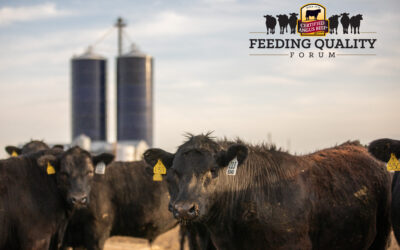
Beef yield grade opportunities detailed
System accounts for no more than 40% of red meat yield variation
by Steve Suther
When anyone thinks about beef grading, USDA quality grades such as Prime, Choice and Select likely come to mind. Quality grades have been in effect for nearly a century, but yield grades have been required in the United States for more than 50 years.
While research continues to prove how well quality grades work, the same cannot be said for yield grades. To be fair, quality grading has been updated regularly, while today’s yield grade system is exactly the same as what went into effect in 1965.
West Texas A&M University animal scientist Ty Lawrence explained the issues at this summer’s Feeding Quality Forum (FQF) in Grand Island, Neb., and Amarillo, Texas. He authored a research paper on the topic this fall entitled, “Beef Yield Grading: History, Issues and Opportunities,” available online at https://cabcattle.com/research.
Lawrence told the 200 FQF attendees that numerous studies have cast doubts on the reliability of the YG system, finding weak to only moderate correlations between yield grade and all of the carcass measurements it was intended to predict, so that those measurements could predict red meat yield.
“We’re trying to predict a predictor of a predictor,” he said, noting it all started with the 1960-published data on 17 independent variables on 162 “representative” cattle processed in the 1950s.
“When the government’s General Accounting Office looked at grading in the late 1970s, they learned that if you sold half of a large pen of cattle to Packer A and the other half to Packer B, you would get two different results,” he said. “Grading was a human, subjective determination.”
The nation that had long since put a man on the moon wanted better. In fact, Lawrence said NASA was asked for help, but the Agriculture Research Service soon turned to Kansas State University’s more focused expertise “in 1980, to estimate red meat yield using a camera.”

Published data proves the “very rudimentary camera” worked. Regardless, for the next decade, the industry “took a left turn toward nuclear magnetic resonance, near-infrared imaging,” the animal scientist said.
More promising technology allowed for a return to video image analysis in the 1990s, as grid marketing emerged amid inconsistent grading by humans. Empathy led them to resist imposing discounts while more readily granting premiums.
“Now you take a picture of a ribeye, convert that to red and white pixels, and you’re counting pixels,” Lawrence said. “This technology gained approval [in 2009] for measuring ribeye area, yield grade, marbling score and back fat thickness.” It cannot measure the kidney, pelvic and heart fat (part of the yield grade equation), so the system accounts for that with a constant or algorithm.

“Now you can take a pen of 500 cattle, sell half to Packer A and half to Packer B, and if they’re both using the camera, you’re going to get the same answer,” he said.
Still, trying “to predict a predictor of a predictor” without accounting for thin meats, brisket or trimmings, using data on 162 carcasses from the mostly Hereford cattle of 60 years ago that ranged from 350 to 900 pounds presents inescapable challenges. It accounts for just 40% of the variation in red meat yield for today’s average fed cattle, and 0% for Holsteins.
The non-linear stair steps for premiums and discounts represent another major flaw in the system, Lawrence said. When the camera calls one carcass a 3.99 and the next a 4.00 yield grade, the grid may suddenly impose a $15 per hundredweight discount.
This system based on a few cattle “of a biological type that no longer exists” predicts red meat yield of cuts from carcasses “increasingly more variable in genetic type and management.”
“We apply that estimate to carcasses that weigh beyond the inference of which [the system] was designed, and we have ignored the opportunity to develop new yield estimates afforded by camera grading,” Lawrence summarized. “Leadership within the beef community must decide if the status quo is acceptable, or if improvement is warranted.”
The Feeding Quality Forums were co-sponsored by Micronutrients, Feedlot magazine, Zoetis, Roto-mix and Certified Angus Beef LLC (CAB). To view presentations and summary information, visit www.feedingqualityforum.com.
You may also like
Certified Angus Beef Recognizes Beef Quality Research
First-place honors go to Andres Mendizabal, an international student pursuing a Ph.D. in animal science at Texas Tech University. His research is titled, “The Accuracy of USDA Yield Grade and Beef Carcass Components as Predictors of Red Meat Yield.”
Building Bridges for Better Beef
As the clock ticked past 2:00 a.m., handshakes finally signaled a deal. History was made that Thanksgiving morning in 1997 when a group of producers bought a material interest in what was then Farmland National Beef Packing Company.
Register Now for Feeding Quality Forum
Consumer demand signals spur progress in the cattle business, but producers must be proactive when making changes in their marketing strategy. The Feeding Quality Forum event delivers solutions to market-focused cattlemen who want to get rewarded for raising premium beef.



